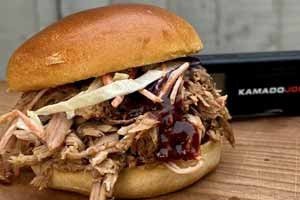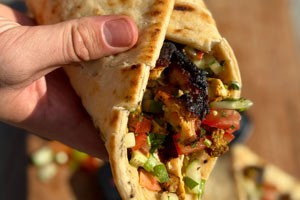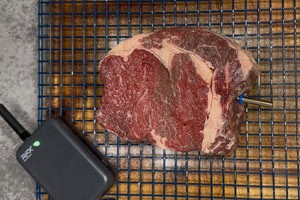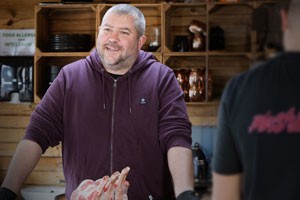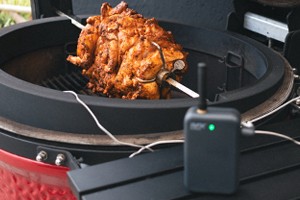Easy, tender BBQ pulled pork, loaded into buns with coleslaw and BBQ sauce.
Thermapen Recipes
-
 How to Cook Christmas Turkey on a BBQRead more
How to Cook Christmas Turkey on a BBQRead moreThe Smokin’ Elk is a huge advocate of cooking outdoors all year round and yes, that includes Christmas. This year, why not take the turkey outside? Not only does it remove the stress from the kitchen whilst freeing up plenty of oven space for all the trimmings, it can also be the solution to enjoying a socially distanced Christmas with loved ones...
-
 5 Best Cooking Christmas Gifts 2025Read more
5 Best Cooking Christmas Gifts 2025Read moreKitchen thermometers make great gifts for cooking lovers. They'll be able to make delicious creations with less stress and they'll get loads of use out of it. Plus, a high-quality thermometer will last them for years to come. Read on for our roundup of cooking Christmas gifts.
-
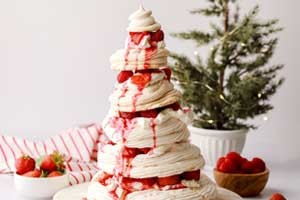 Christmas Tree PavlovaRead more
Christmas Tree PavlovaRead moreThis fresh and fruity Christmas tree pavlova recipe is the perfect centrepiece for your festive celebrations. It’s the light but flavourful dessert everyone needs to cleanse their palettes after a rich meal, but its striking Christmas tree shape keeps it looking suitably festive and celebratory.
-
 Mike Tomkins' Ultimate Beef WellingtonRead more
Mike Tomkins' Ultimate Beef WellingtonRead moreMasterChef finalist 2021 Mike Tomkins shares his favourite, ultimate beef wellington recipe. Layers of bresola, spinach pancakes and mushroom duxelles mixed with duck liver pâté make this recipe extra special.The key to a wellington has nothing to do with timing, it’s all about temperature!
-
 How To Make & Serve Mulled WineRead more
How To Make & Serve Mulled WineRead moreThe Christmas season is now upon us which means that the food and drink festivities can begin! Whether you’re having people over to your house or just looking for a cosy night in, mulled wine will always go down a treat at this time of year. Homemade mulled wine is easy to make and definitely tastes that little bit more special...
-
 Mike Tomkins’ Simple Salmon En Croute with SpinachRead more
Mike Tomkins’ Simple Salmon En Croute with SpinachRead moreThis simple salmon en croute with spinach is the perfect centrepiece for fish lovers. Mike Tomkins kept this salmon en croute recipe classic but high quality and full of flavour. Cooking it to temperature with Thermapen is the easiest way to know when your salmon is safely cooked but perfectly soft inside.
-
 Christmas Marmalade Glazed GammonRead more
Christmas Marmalade Glazed GammonRead moreAt Christmas time we all tend to overindulge, and this glazed gammon joint is worth the indulgence. This would make a great alternative to Turkey or even a wonderful dish served cold at a buffet on Boxing Day. Of course when cooking any meat we recommend using our Thermapen to ensure it is not under or over cooked. A joint of gammon should reach 71°C, ensuring it is perfectly cooked throughout...
-
 How Long to Rest a TurkeyRead more
How Long to Rest a TurkeyRead moreTo find out the scientific secrets behind cooking the perfect turkey, we carried out the ultimate temperature experiment. Here we’ve summarised our findings on the resting front, but you can read the experiment blog to learn more about the full process. Read on to find out how long to rest a turkey for the best results.
-
 The Smokin' Elk's Standing Rib RoastRead more
The Smokin' Elk's Standing Rib RoastRead moreThis spectacular standing rib roast by BBQ master The Smokin’ Elk, cooked to medium rare perfection with the DOT Digital Oven Thermometer and Thermapen One. A special cut of meat always deserves a special gravy too, so I’m also going to show you how to make that!
-
 The Ultimate Turkey Cooking GuideRead more
The Ultimate Turkey Cooking GuideRead moreCooking a turkey can send fear rippling through the hearts of even the best home cooks. Will it defrost in time? Do I brine it? What even is brining? Is it cooked? Why is it dry? How do I rest it? Can I reheat it? We've all asked ourselves these questions.
-
 Mike Tomkins' KellyBronze Turkey RecipeRead more
Mike Tomkins' KellyBronze Turkey RecipeRead moreKellyBronze turkeys are a unique breed of slow grown, free range birds. There’s no better way to make your Christmas the one than by investing in the best of the best for the ultimate Christmas meal.
-
 Kenny Tutt's Roast Goose with Mulled PlumsRead more
Kenny Tutt's Roast Goose with Mulled PlumsRead moreRich, perfectly cooked roast goose and sweet, festive mulled plums make the perfect pairing in this Christmas recipe by Kenny Tutt. To make your bird one to remember, cook to 65-70°C using your Thermapen. The meat will rise to a safe temperature of 74°C as it rests.




